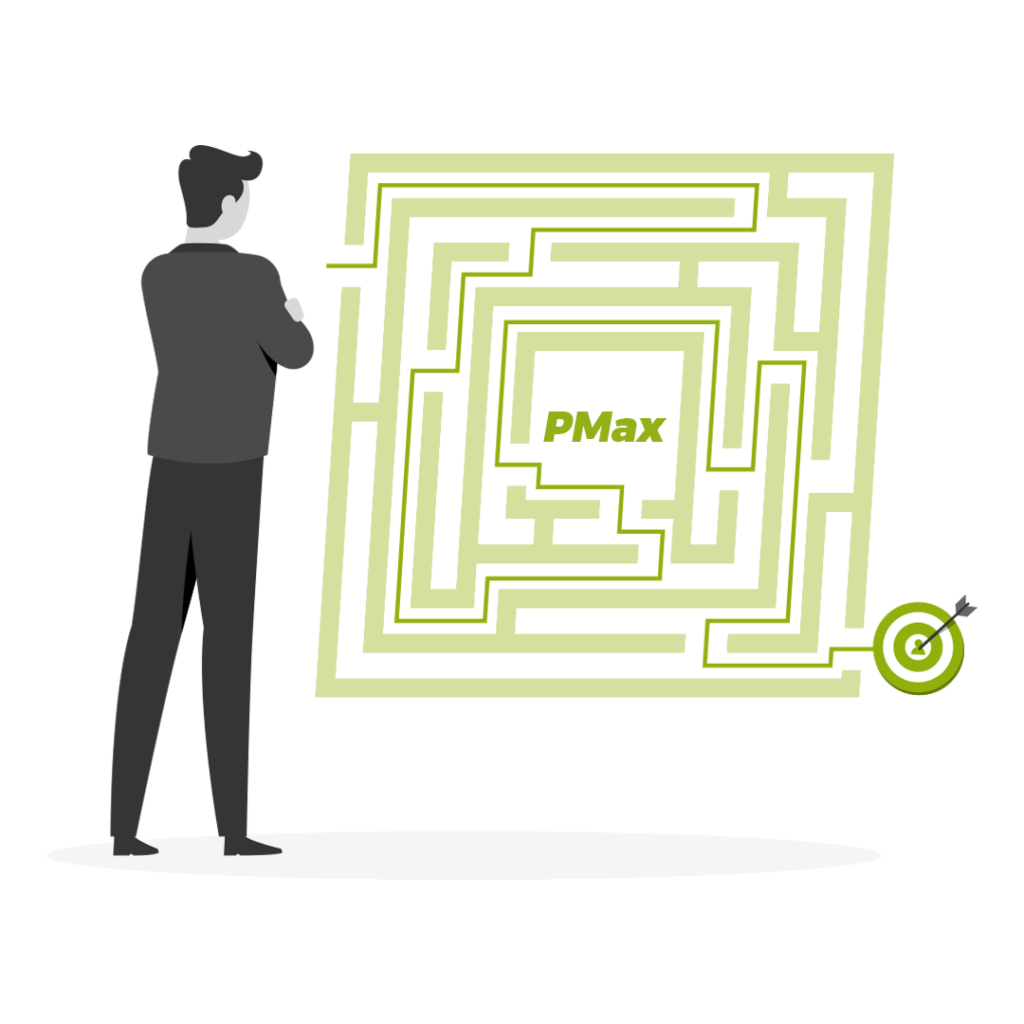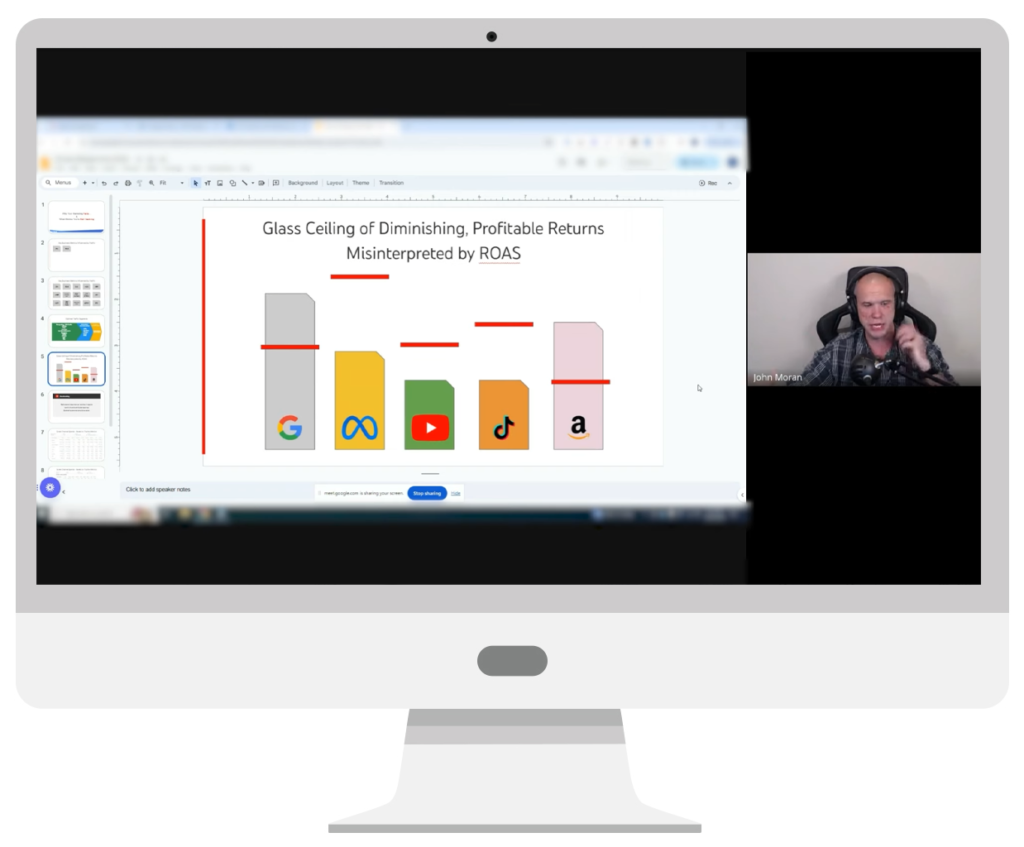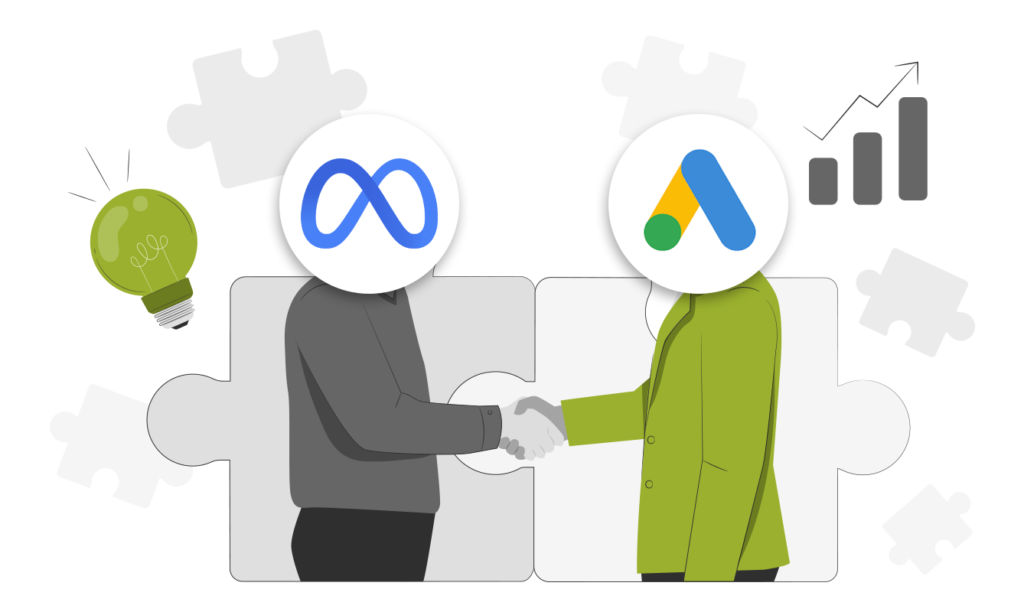Can you believe we are coming up on three years since the Performance Max campaign option was launched inside of Google Ads?
Boy, what a ride it has been.
If you have been working with paid advertising platforms for a while, you know that new tools and capabilities—as well as entire campaign types—are continually added or removed as technology advances and marketing channels evolve.
Our job as an agency is to stay on top of those changes and determine which strategies are still effective so we can help our clients achieve consistent growth.
In this video, John explains why Performance Max can still be an effective part of your overall PPC strategy as he lays out his plan for making Meta Ads and Google Ads work together.

Let's start at the beginning.
About 11 months ago, you may recall John was moving his clients off Performance Max (PMax) and switching to Standard Shopping. Why? Because he noticed that PMax was becoming less valuable, and he explains why: Performance Max is extremely powerful, but what happens is that when it grows, it has built-in fallacies that grow with it.
John expands on that point, saying that when the campaign is very new and the audience is cold, you will get all that good new traffic that it is going after. The problem is that because Google is very poor at tagging (only about 25% to 30%), what ends up happening is that it grabs conversions wherever it can find them.
So, as your business grows and your awareness grows, your audience becomes more warm but will look like it is more valuable in terms of return on ad spend (ROAS). As people familiar with your brand keep clicking, that is the traffic it will continue to go after. In other words, it is very good at finding the people it knows will convert but bad at finding people who don’t know about you that would convert.
Long story short? Google Ads doesn’t generate demand; it captures demand. Meta Ads is very good at generating demand, but sometimes fairly poor at capturing demand—but when used together, you get the best of both worlds.

The point of diminishing profitable returns
Now, John is not saying that you need to switch out PMax; your PMax campaigns can still be really effective. However, there will likely be a point of diminishing profitable return. (You can read more about that here.)
Basically, the two metrics that people tend to focus on most are cost per acquisition (CPA) and ROAS, but John says he doesn’t put a lot of weight into what the in-app metrics say because it really doesn’t show the big picture. In many cases, he doesn’t even use conversion tracking, but instead focuses on a broader group of key business metrics to get a more accurate and holistic view of performance. Why is this important?
Because typically, companies that are just focusing on ROAS will under-spend in Meta Ads and over-spend in Google Ads—by which time they are past the point of diminishing profitable return where they could try to put more money into Performance Max—resulting in inefficient ad spend. To combat this issue, John created what he calls a really good way to make Google Ads and Meta Ads work together.

Making Google Ads and Meta Ads work together
John recommends doing a multi-level model inside of Meta Ads, and then a direct response strategy inside of Google Ads. This allows you to use either Performance Max at a lesser spend or scale a Standard Shopping or Standard Search campaign to the point where it will hit diminishing return but is supported by Meta Ads in the meantime.
To start, he creates three different campaigns in Meta Ads (Level I, Level II, and Level III):
- Level I comprises all website traffic plus all Meta and Instagram page engagers, minus all existing customers—to the point that we can rely on Meta Pixel. (John recommends using a tool such as Edgemesh or Blotout for better accuracy.) This is going to bring one-time-click users to the site, at which point Level III comes into play.
- Level III is your typical cold traffic remarketing.
- The middle level is something that can also help Meta Ads generate more demand and actually capture more demand at the same time. Level II excludes all website traffic as well as those who have purchased already, instead targeting the people who are engaging in Level I ads and engaging in the Meta pages. In other words, they haven’t been to the website, but they are liking, commenting, sharing, and watching on social. You need to keep them engaged, and that engagement campaign will earn the click that then gets your Level III to convert.
The reason John is using this model is because he is running a lot of Standard Shopping and Standard Search campaigns. He is not concerned so much with ROAS, because it’s the first click in a journey. For example, he is not trying to get a 5X return on the first click of a journey for a $150 leather jacket. However, as he spends more, Google converts the Level III people very well.
“If I didn’t have Meta, my Standard Shopping and Search would not be converting very well,” says John. “I have a seven-day time lag inside of Standard Shopping and Standard Search because my Meta remarketing beats them up at a 5X and 6X frequency.”

Why this method works
In a nutshell, John likes this method because it allows you to take your Google campaigns and be more direct response, knowing that your remarketing in Meta will take over and get those people to convert. “You flood it with cold traffic, but only to a point where you’re actually affecting your media efficiency ratio [MER] and stop there,” he explains.
If you are bringing hundreds and hundreds more people and they’re just becoming less and less and less engaged, your nCAC is going to go up and your MER is going to go down. But pairing John’s multilevel Meta Ads strategy with direct response inside of Google Ads will allow you to scale and increase profitability.
As for Performance Max…
“I don’t like PMax because I can’t scale it,” admits John. “I don’t think I’ve actually ever made PMax scale; I made it work, but I’ve never really made it scale. I made PMax scale when I scaled YouTube and Meta, and then it’s like all of a sudden it goes from a 2X to a 6X ROAS because it’s simply just inserting itself in the customer journey, but I’ve never actually made it scale on its own.”
His advice? If you are happy with PMax, push on Meta Ads. Outpace Google Ads. Then, PMax will still do a really good job at capturing the demand you are generating off of Meta Ads.
Author
Pamela is the Senior Content Writer at Solutions 8. When she's not writing, you can find her hiking in the woods with her dogs. She is currently on a quest to visit every national park in the United States.
 Pamela Sapio
Pamela Sapio










